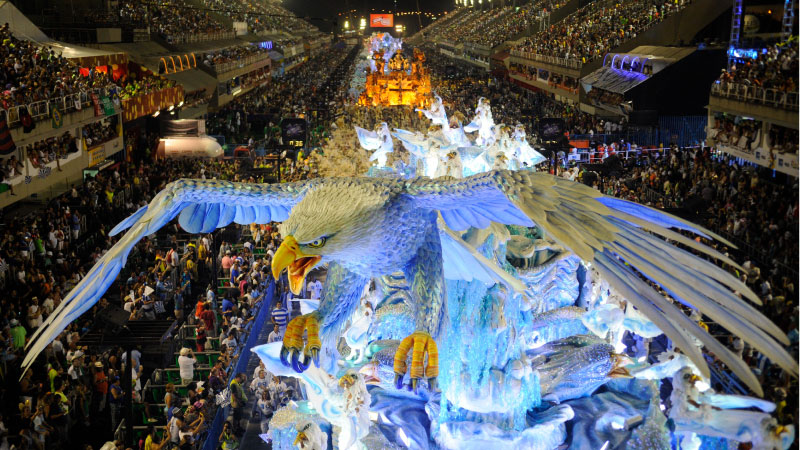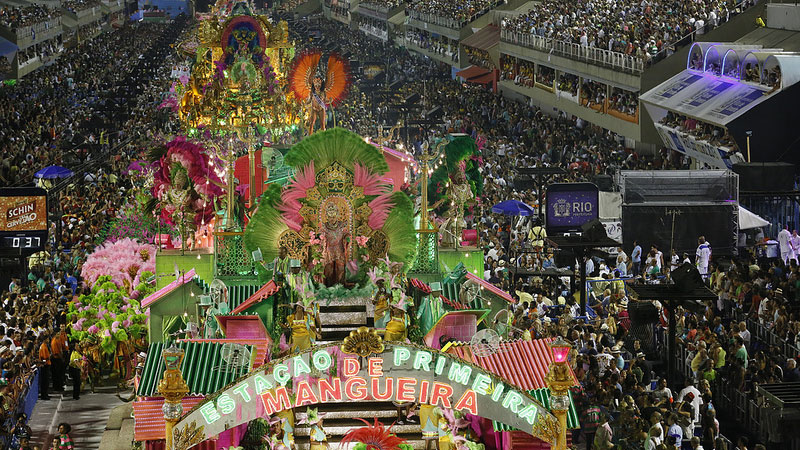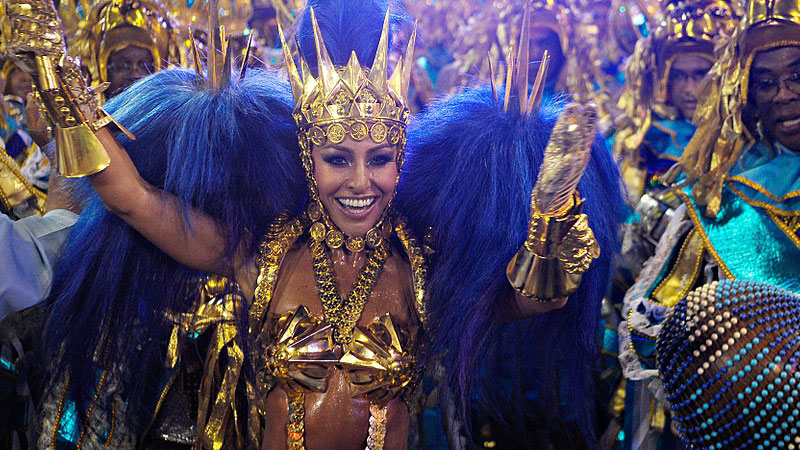The Carnival in Rio de Janeiro is one of the most famous and vibrant festivals in the world. Held every year before Lent, this event is a massive celebration of life, culture, and tradition, attracting millions of visitors from all corners of the globe. With its dazzling parades, elaborate costumes, and infectious samba rhythms, Rio Carnival is a spectacle that captures the heart and soul of Brazil. This article explores the history, significance, and key highlights of this extraordinary festival, taking you on a journey through the streets of Rio during Carnival.

A Brief History of Rio Carnival
Carnival in Rio de Janeiro has roots that date back to the 18th century when the Portuguese settlers brought the tradition of celebrating “Entrudo” to Brazil. Entrudo was a time of revelry where people took to the streets to throw water and food at each other, symbolizing the cleansing of sins before Lent. Over time, this tradition evolved, influenced by African, Indigenous, and European cultures, eventually transforming into the grand spectacle we know today.
By the late 19th century, Carnival began to take on a more organized form, with the introduction of samba music, parades, and competitions. Samba, a genre that originated in the favelas of Rio, became the heartbeat of Carnival, with its infectious rhythms and vibrant beats. The first samba schools were formed in the 1920s, and these groups quickly became the driving force behind the Carnival parades, each vying for the prestigious title of the best samba school.
The Samba Parade: The Heart of Rio Carnival
The highlight of Rio Carnival is undoubtedly the Samba Parade, held at the Sambadrome Marquês de Sapucaí, a purpose-built stadium designed by the renowned architect Oscar Niemeyer. The parade features Rio’s top samba schools, each of which spends the entire year preparing for this one event. The schools are judged on various criteria, including the quality of their music, the creativity of their floats, the intricacy of their costumes, and the overall theme of their performance.
Each samba school parades down the Sambadrome with thousands of dancers, musicians, and performers, all dressed in elaborate costumes that often tell a story related to Brazilian culture, history, or social issues. The floats are massive, often towering several stories high, and are adorned with intricate decorations, lights, and sometimes even live performers. The energy during the parade is electrifying, with the crowd singing, dancing, and cheering along with the performers.

Blocos: The Street Parties of Rio Carnival
While the Samba Parade is the most famous event of Rio Carnival, the street parties, known as “blocos,” are where the true spirit of Carnival can be felt. These blocos are spontaneous and informal gatherings of people who take to the streets to dance, sing, and celebrate. Each bloco has its own theme, music, and atmosphere, and they can range from small, intimate gatherings to massive parties with tens of thousands of participants.
One of the most famous blocos is the “Banda de Ipanema,” which attracts a diverse crowd and is known for its inclusivity and joyous atmosphere. Another popular bloco is “Cordão do Bola Preta,” one of the oldest and largest in Rio, drawing over a million people to the streets. The blocos are a testament to the community spirit and the love of music and dance that define Carnival in Rio.
Costumes and Fantasy: The Art of Carnival Dressing
Costumes are an integral part of Rio Carnival, with participants often spending months creating or sourcing their outfits. The costumes are a celebration of creativity, often featuring bright colors, feathers, sequins, and intricate designs. Some costumes are extravagant and flamboyant, while others are more simple and humorous, but all are worn with a sense of pride and joy.
The concept of “fantasia,” or fantasy, is central to Carnival dressing. Participants use their costumes to transform themselves into someone or something else, embracing the freedom and playfulness that Carnival allows. Whether it’s a mythical creature, a historical figure, or a character from Brazilian folklore, the costumes add an extra layer of magic to the festivities.

The Influence of Rio Carnival on Global Culture
Rio Carnival is not just a Brazilian festival; it has become a global phenomenon, influencing cultures and festivals around the world. The energy, music, and style of Rio Carnival have inspired similar events in cities such as London, New York, and Tokyo. The concept of Carnival has also been adopted and adapted in various forms, from the Caribbean Carnival in Trinidad and Tobago to the Notting Hill Carnival in London.
The music of Rio Carnival, particularly samba, has had a significant impact on global music, influencing genres such as jazz, bossa nova, and pop. The infectious rhythms and melodies of samba have made their way into the music of artists worldwide, further spreading the spirit of Carnival.
The Economic and Social Impact of Rio Carnival
Rio Carnival is not just a cultural event; it is also a major economic driver for the city of Rio de Janeiro. The festival generates significant revenue through tourism, with hotels, restaurants, and local businesses all benefiting from the influx of visitors. Carnival also provides employment opportunities, particularly in the creative industries, with thousands of people involved in costume design, float construction, and event organization.
However, Rio Carnival also has its social challenges. The festival highlights the stark contrasts between the rich and poor in Rio, with the luxurious costumes and floats often standing in sharp contrast to the poverty in the favelas. Despite this, Carnival is a time when the city’s social barriers are temporarily broken down, with people from all walks of life coming together to celebrate.
Carnival in Rio de Janeiro is more than just a festival; it is a celebration of life, culture, and the indomitable spirit of the Brazilian people. It is a time when the streets of Rio come alive with music, dance, and color, and when people from all over the world come together to join in the revelry. Whether you’re watching the grand spectacle of the Samba Parade or dancing in the streets at a bloco, Rio Carnival is an experience like no other, a true testament to the joy and creativity of humanity.



